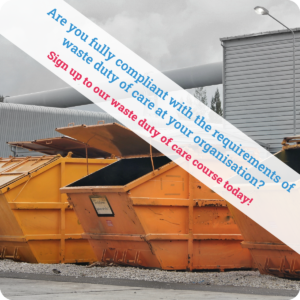Jurisdiction: Great Britain
Commencement: 24th May 2023
Amends: GB Retained: Regulation (EU) 2019/2072 establishing uniform conditions for the implementation of Regulation (EU) 2016/2031 as regards protective measures against pests of plants
The GB Retained: Regulation (EU) 2019/2072 establishing uniform conditions for the implementation of Regulation (EU) 2016/2031 as regards protective measures against pests of plants lists the different pests of plants and is supplementary to Regulation (EU) 2016/2031 on protective measures against pests of plants, which is known as the ‘EU Plant Health Regulation’. This is because this Regulation establishes a number of annexes that the EU Plant Health Regulation refers to that list relevant plant pests, measures needed to reduce the risk of those pests, and plants that are prohibited from entering the EU.
The EU Plant Health Regulation was brought into force in order to revise and improve current EU plant health legislation and implement uniform rules across all EU Member States. It continues to implement controls and restrictions which apply to the import from third countries (countries which are not EU Member States), and the internal movement within and between EU Member States, of certain plants, plant pests and other material (such as soil) to help reduce biosecurity risk, strengthen the current plant health regime, and protect the environment from the spread of harmful pests and diseases.
There are no direct compliance duties under this Regulation for organisations.
The Regulation provides a number of annexes that contain various lists of Union quarantine pests, protected zone quarantine pests, and Union regulated non-quarantine pests, and the measures on plants, plant products and other objects to reduce the risks of those pests to an acceptable level.
Union quarantine pests
The EU Plant Health Regulation states that any pests classed as a ‘Union quarantine pest’ must not be introduced into, moved within, held, multiplied or released in the EU.
The list of Union quarantine pests is set out in Annex II of this Regulation. The list of Union quarantine pests not known to occur in the EU is set out in Part A of Annex II, and the list of Union quarantine pests known to occur in the EU is set out in Part B of Annex II.
Protected zone quarantine pests
The list of the protected zones and the respective protected zone quarantine pests are stated in Annex III of this Regulation.
Union regulated non-quarantine pests
Union regulated non-quarantine pests are transmitted mainly through specific plants for planting. There is a list of Union regulated non-quarantine pests set out in Annex IV of this Regulation. These pests cannot be introduced or moved within the EU by professional operators on the plants through which they are transmitted.
The Annexes also provide lists of plants, plant products and other objects whose introduction into, or movement within, the EU is either:
- Prohibited from certain third countries;
- Subject to special requirements when originating from certain third countries;
- Prohibited in certain protected zones;
- Subject to phytosanitary certificates*;
- Subject to phytosanitary certificates when intended to be introduced or moved within protected zones;
- Subject to plant passports; or
- Subject to plant passports when intended to be introduced or moved within certain protected zones.
*Phytosanitary certificates certify that material has been inspected, is considered free from pests and conforms to the plant health regulations of the importing country.
The Annexes are supplementary to Regulation (EU) 2016/2031, where the compliance duties around plant health can be found.
Amendment
In order to protect biosecurity and support trade between Great Britain (GB) and other countries, areas of demarcation* have been established to protect against high risk pests.
*A demarcated area is an area that is made up of a zone of known infection, and a buffer zone.
Movement of high risk oak trees from demarcated areas infested by Thaumetopoea processionea L.
Movement of high risk oak trees* is prohibited outside the demarcated area infested by Thaumetopoea processionea L. (an Oak Moth that infests oak trees) as listed in the Schedule. Movement of the trees within the area is only allowed if professional operators comply with biosecurity and movement conditions.
*In this case a high risk oak tree is any oak tree for planting with a girth of at least 8 cm, measured at 1.2 metres from the root collar.
Regulated non-quarantine pests for seed potatoes
The thresholds of regulated non-quarantine pests for seed potatoes have been updated and can be found here.
Applications for authorisation from Member States
Applications for authorisation from Member States have been updated to add the name and address of the laboratory where the application originated.
The Legislation Update Service is the best way to stay up to date automatically with legislation in England, Wales, Scotland, Northern Ireland and the Republic of Ireland.
Sign up for your free trial to get instant access.
